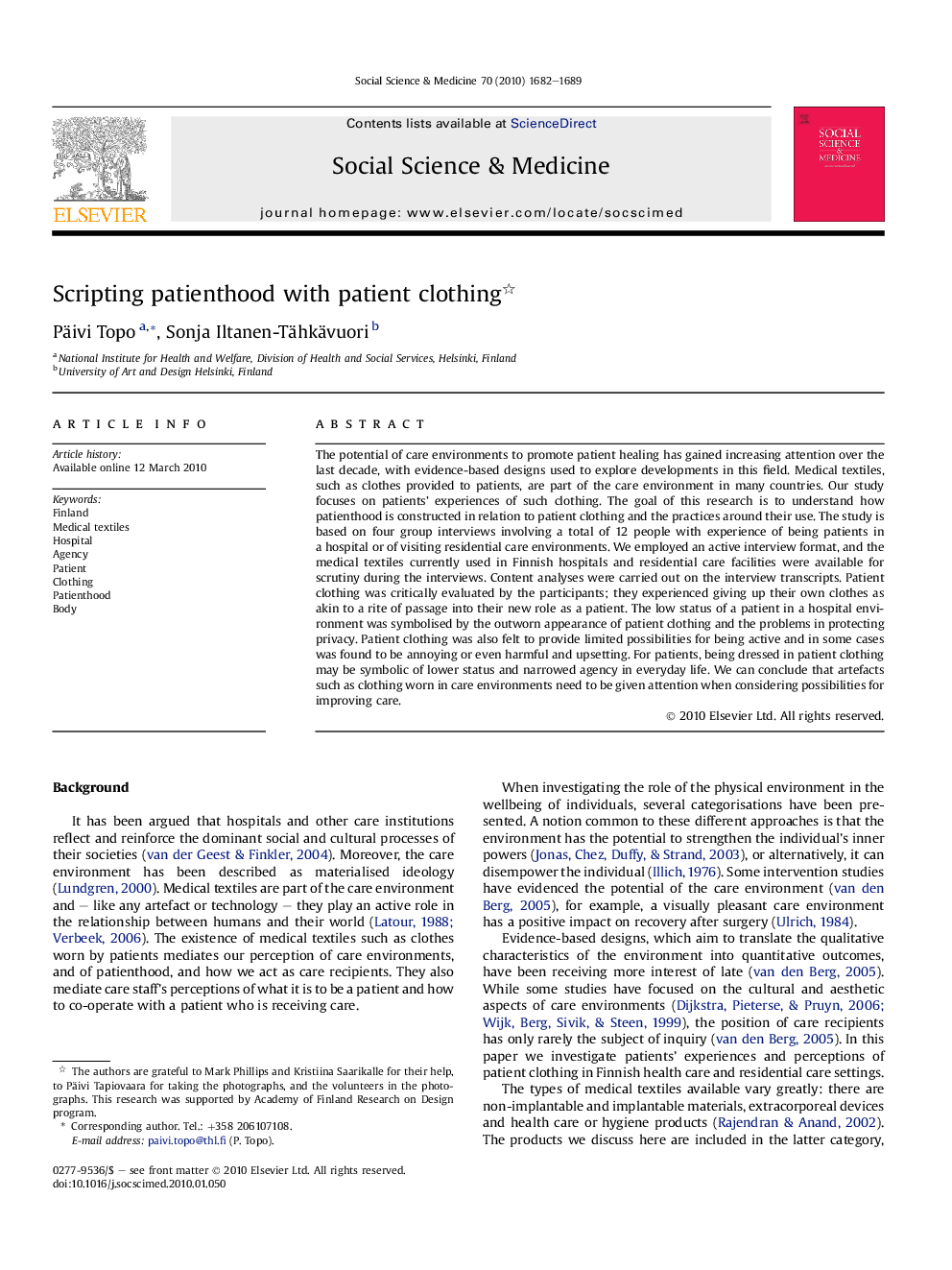| کد مقاله | کد نشریه | سال انتشار | مقاله انگلیسی | نسخه تمام متن |
|---|---|---|---|---|
| 953157 | 927569 | 2010 | 8 صفحه PDF | دانلود رایگان |

The potential of care environments to promote patient healing has gained increasing attention over the last decade, with evidence-based designs used to explore developments in this field. Medical textiles, such as clothes provided to patients, are part of the care environment in many countries. Our study focuses on patients’ experiences of such clothing. The goal of this research is to understand how patienthood is constructed in relation to patient clothing and the practices around their use. The study is based on four group interviews involving a total of 12 people with experience of being patients in a hospital or of visiting residential care environments. We employed an active interview format, and the medical textiles currently used in Finnish hospitals and residential care facilities were available for scrutiny during the interviews. Content analyses were carried out on the interview transcripts. Patient clothing was critically evaluated by the participants; they experienced giving up their own clothes as akin to a rite of passage into their new role as a patient. The low status of a patient in a hospital environment was symbolised by the outworn appearance of patient clothing and the problems in protecting privacy. Patient clothing was also felt to provide limited possibilities for being active and in some cases was found to be annoying or even harmful and upsetting. For patients, being dressed in patient clothing may be symbolic of lower status and narrowed agency in everyday life. We can conclude that artefacts such as clothing worn in care environments need to be given attention when considering possibilities for improving care.
Journal: Social Science & Medicine - Volume 70, Issue 11, June 2010, Pages 1682–1689